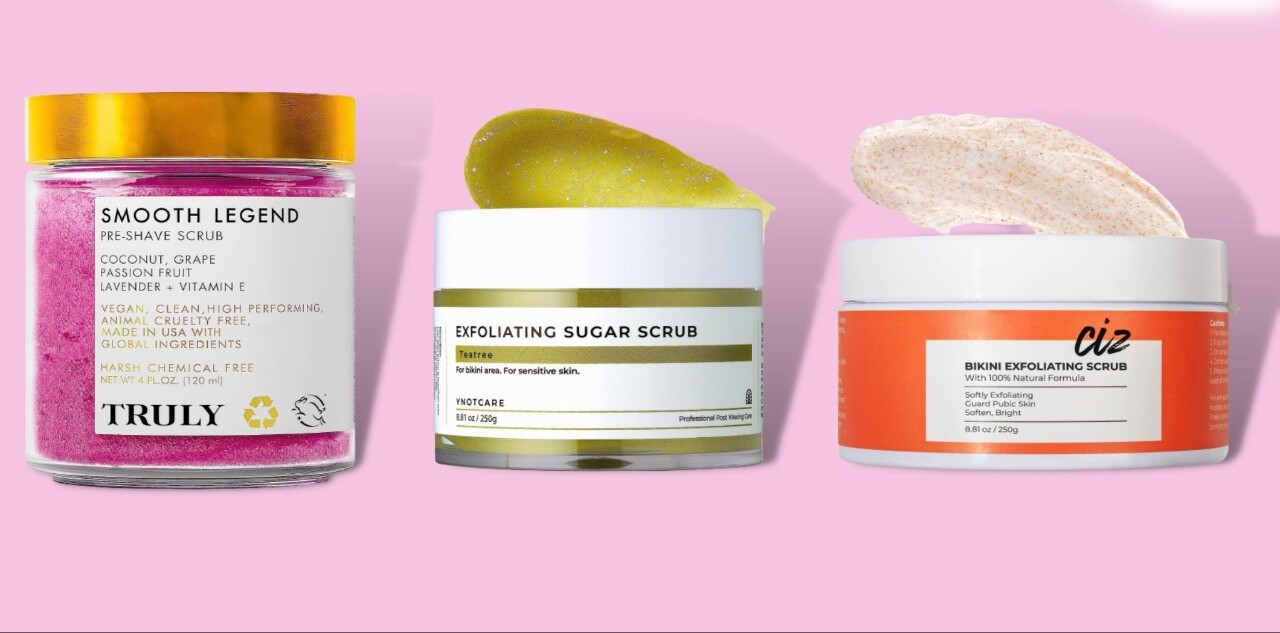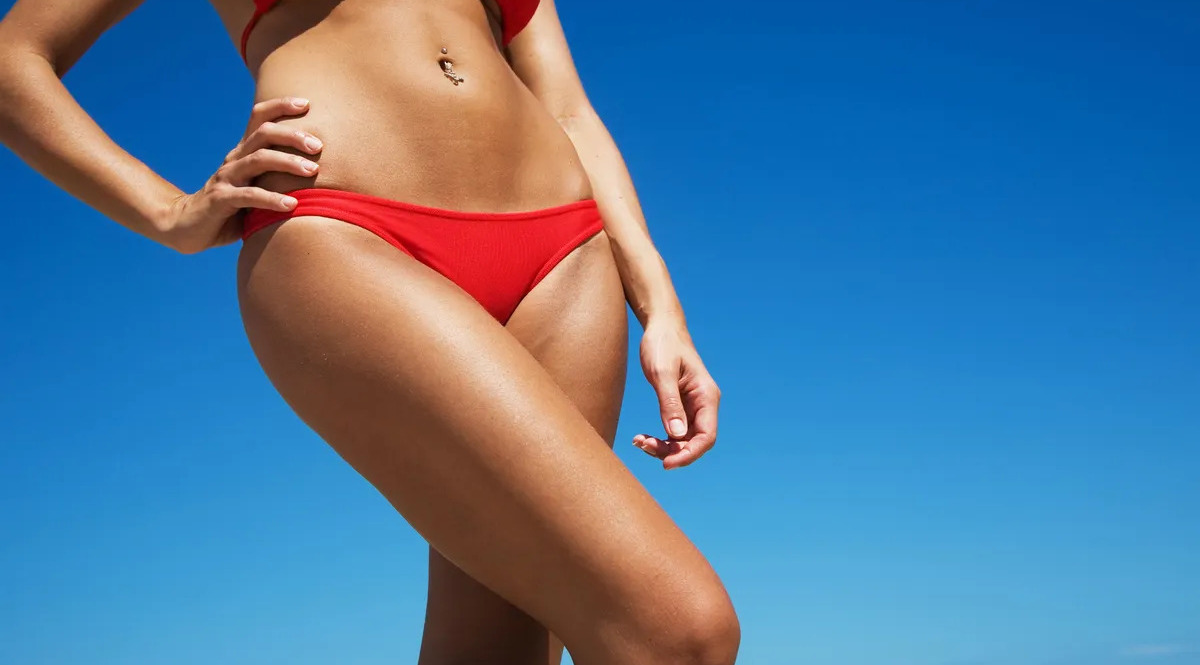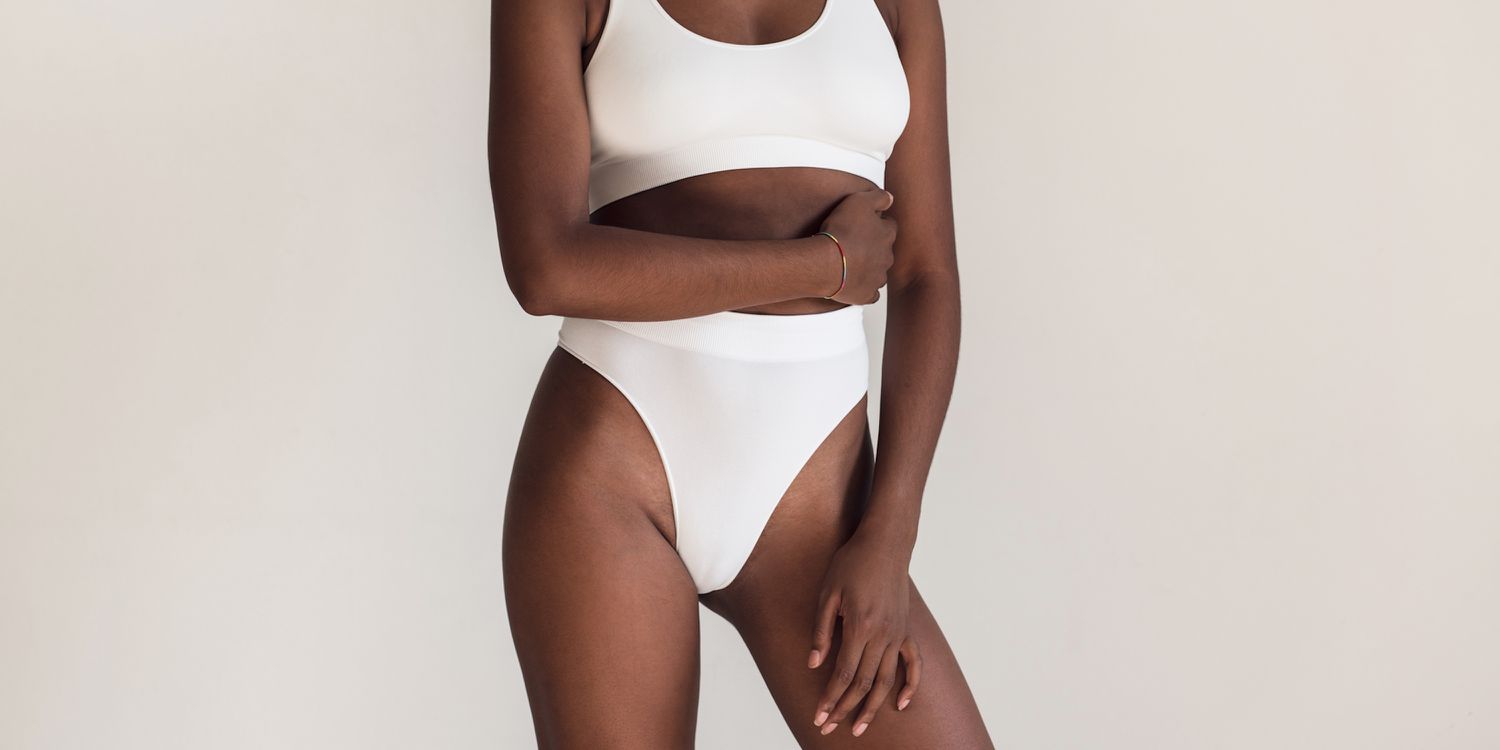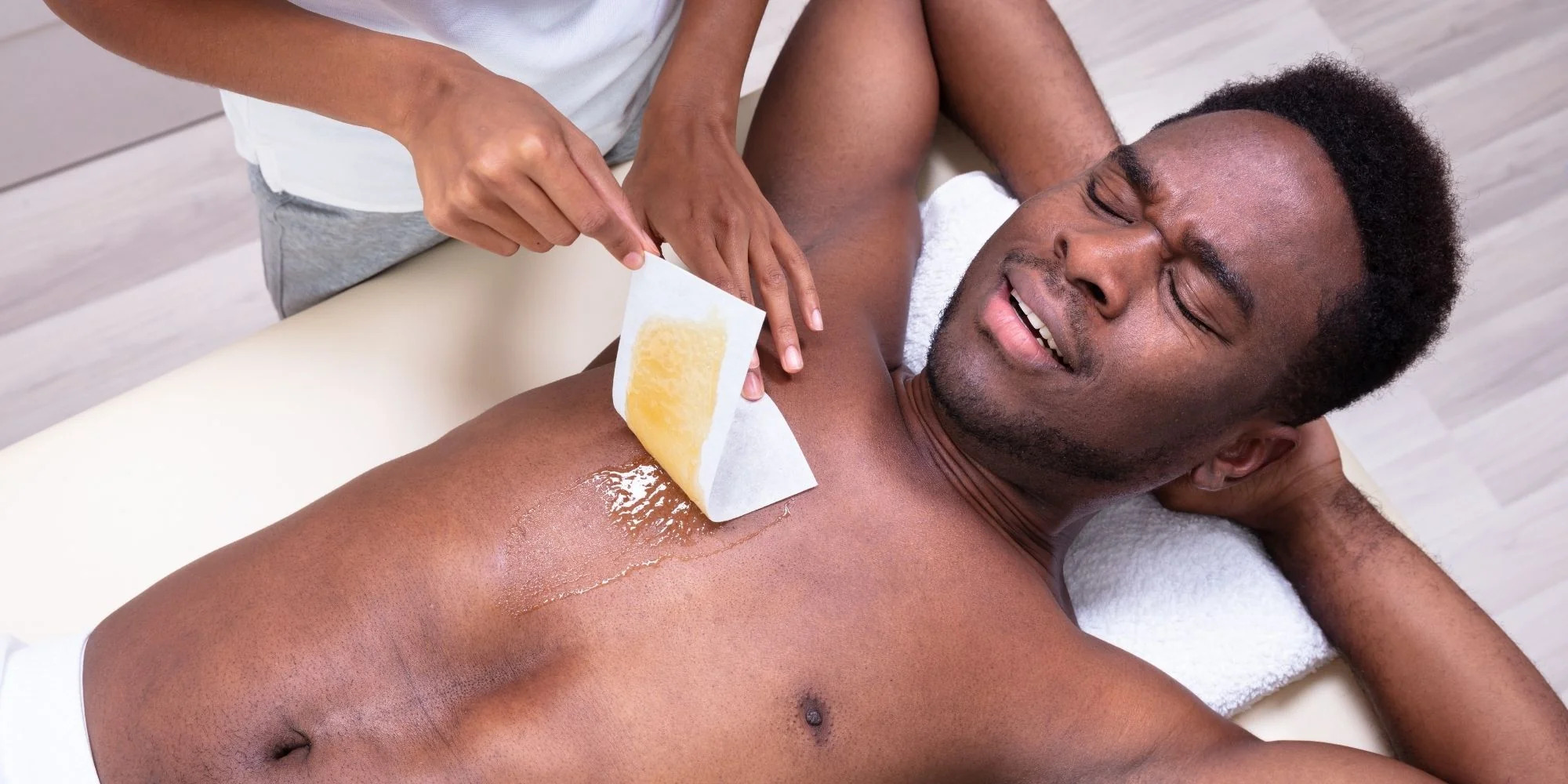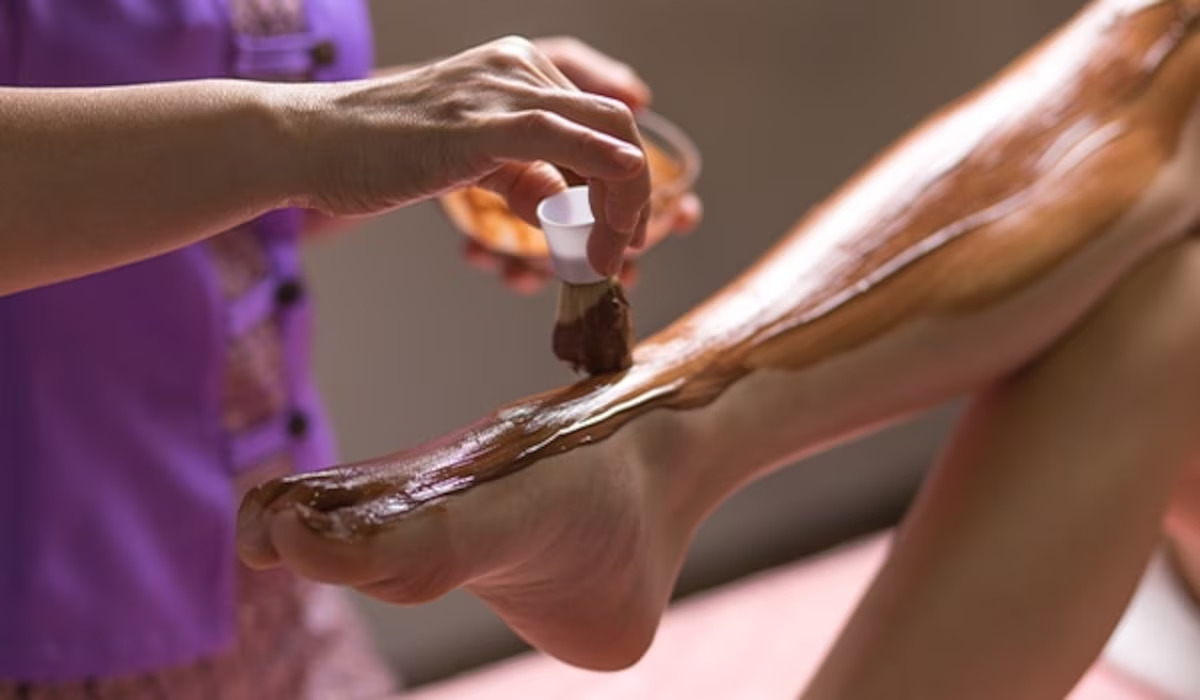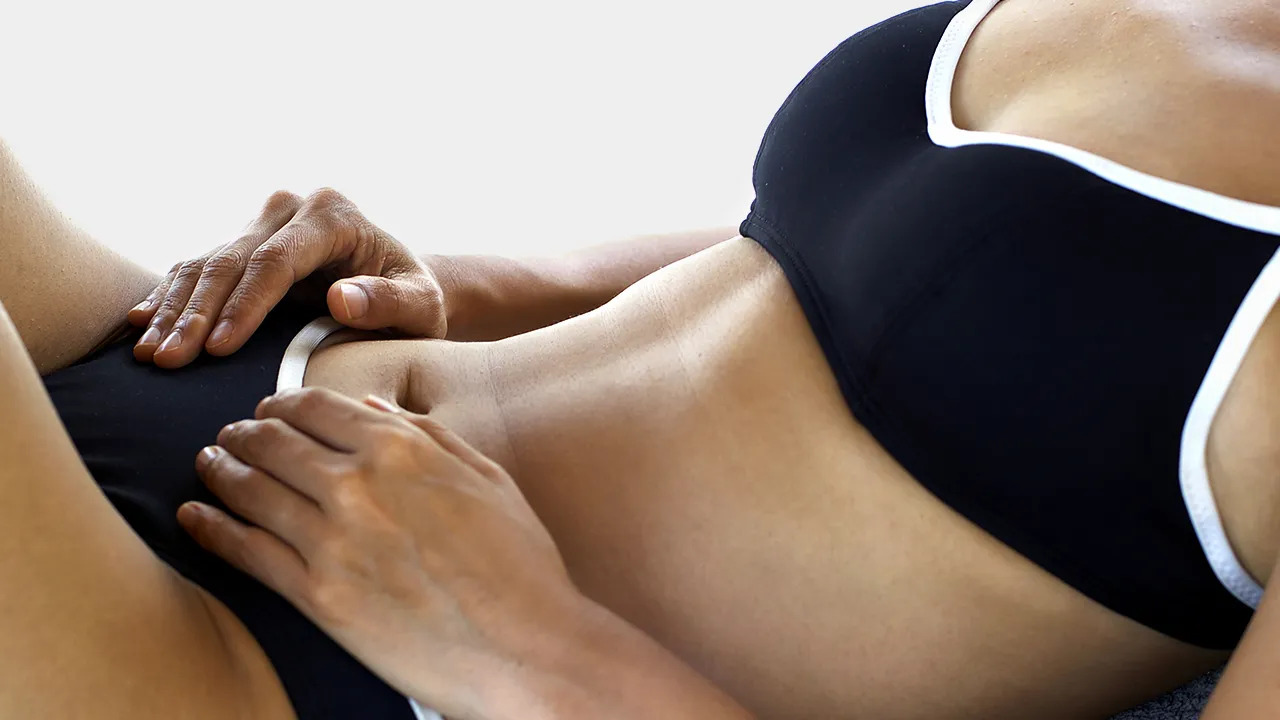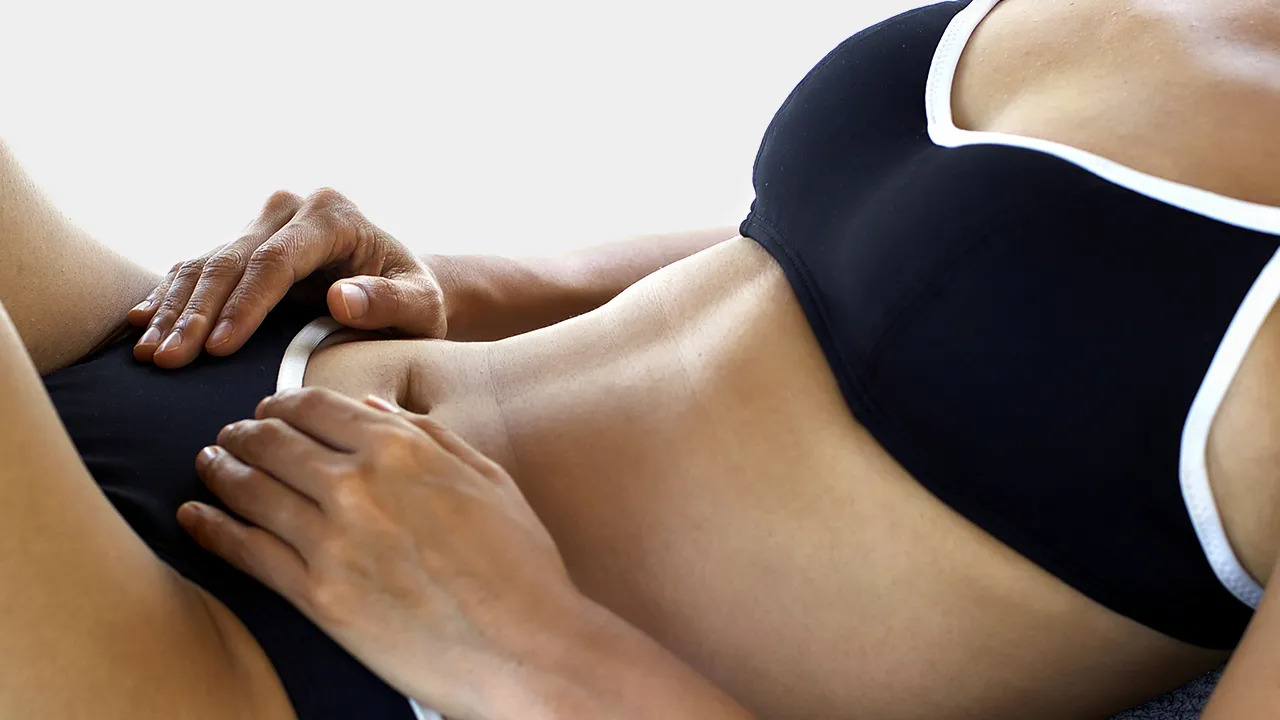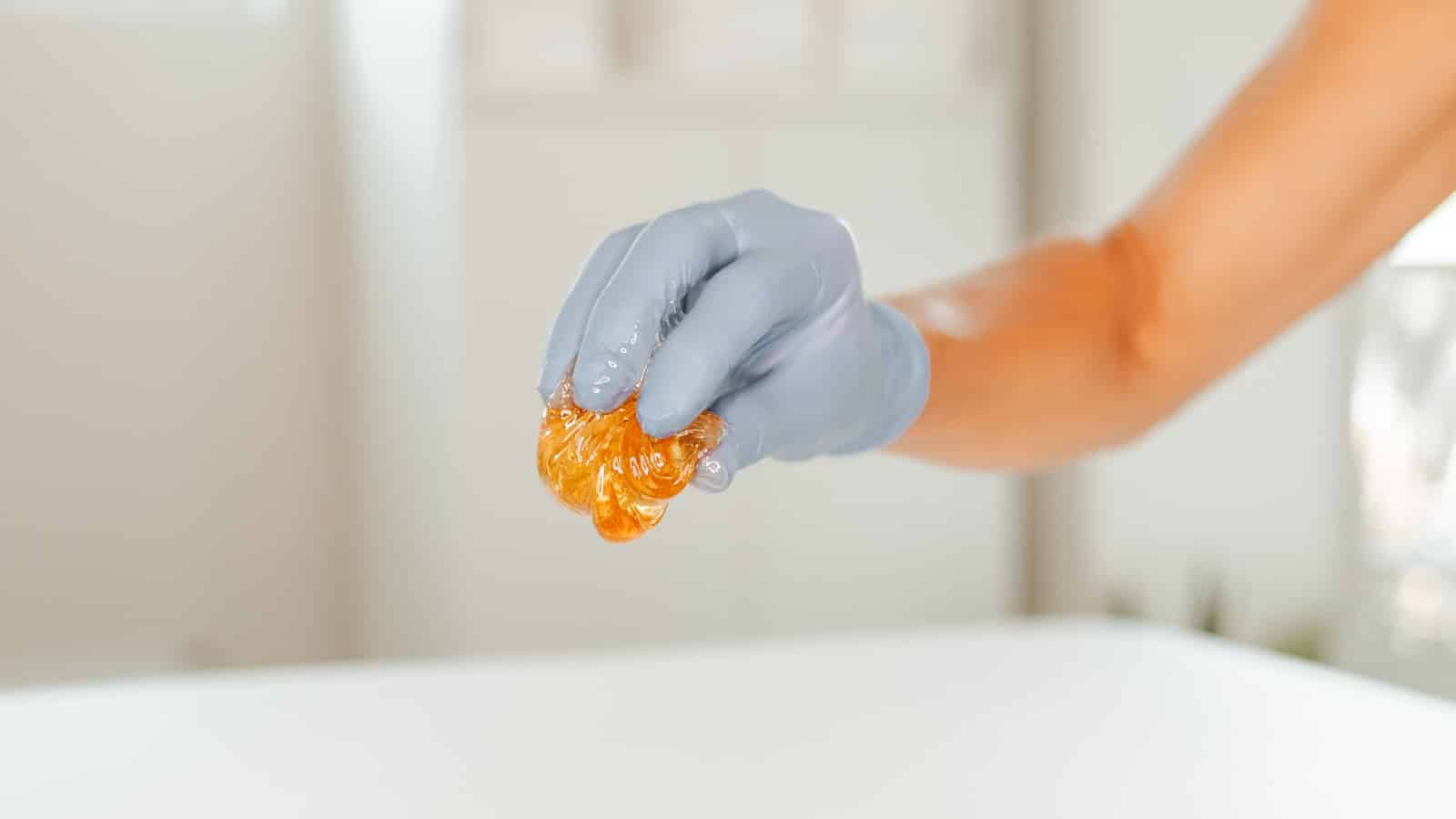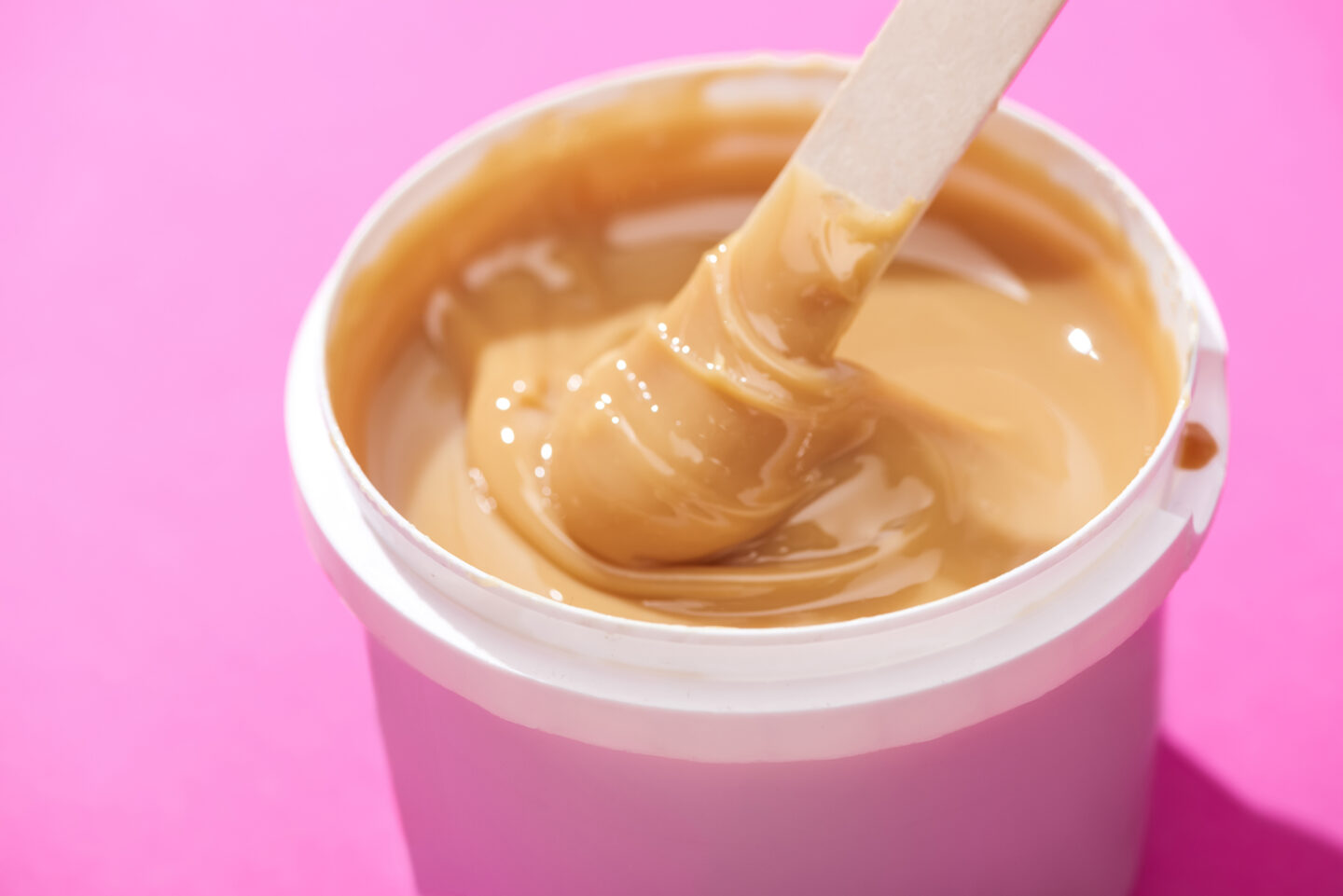

FAQs
What Is A Brazilian Wax
Modified: September 23, 2023
Learn everything you need to know about Brazilian waxing, including general questions and important tips. Achieve silky smooth skin with a painless procedure.
(Many of the links in this article redirect to a specific reviewed product. Your purchase of these products through affiliate links helps to generate commission for Under-tec.com, at no extra cost. Learn more)
Table of Contents
- Introduction
- What is a Brazilian Wax?
- The History of Brazilian Waxing
- Reasons for Getting a Brazilian Wax
- Different Types of Brazilian Wax
- Preparing for a Brazilian Wax
- The Brazilian Waxing Process
- Aftercare for Brazilian Wax
- Potential Side Effects and Risks
- Frequently Asked Questions about Brazilian Waxing
- Conclusion
Introduction
Welcome to the world of Brazilian waxing! In this article, we will explore the fascinating world of Brazilian waxing – what it is, its history, the reasons people choose to get it, the different types available, and how to prepare for and take care of your wax. Whether you’re new to the concept or a seasoned practitioner, this article will provide you with valuable insights and tips.
Brazilian waxing is a popular hair removal method that gained immense popularity in recent years. It involves the removal of hair from the pubic region, leaving it smooth and hair-free. This method has gained a reputation for being thorough and longer-lasting than traditional forms of hair removal, making it a popular choice for both men and women.
The practice of Brazlian waxing has a rich history. It originated in Brazil, where it was common for women to remove unwanted hair from their bodies. The Brazilian waxing technique made its way to the United States in the late 1980s, and since then, it has become increasingly popular in many parts of the world.
People choose to get Brazilian waxes for various reasons. Some prefer the aesthetic appeal of a hair-free pubic region, while others enjoy the feeling of cleanliness and enhanced sensitivity. Additionally, athletes and swimmers often choose Brazilian waxing to improve their performance and reduce friction while participating in their chosen sports.
When it comes to Brazilian waxing, there are different types to choose from. The most common options include the traditional Brazilian wax, which removes all the hair from the pubic region, and the partial Brazilian wax, which leaves a desired amount of hair intact. Additionally, there are variations such as the landing strip or triangle wax, where a small patch of hair is left for aesthetic purposes.
Preparing for a Brazilian wax is essential to ensure a successful and comfortable experience. This may involve growing out your hair to the ideal length, exfoliating the area, and avoiding certain skincare products that can cause sensitivity or irritation.
During the Brazilian waxing process, a trained professional will apply a warm wax to the desired area and remove the hair using cloth strips or a more modern stripless wax. The process can be a bit uncomfortable for first-timers, but the results are well worth it.
Aftercare is crucial to maintain the smoothness and health of the waxed area. This may include avoiding hot baths or showers, wearing loose-fitting clothing, and using gentle products on the treated area.
While Brazilian waxing has numerous benefits, it’s essential to be aware of potential side effects and risks. These may include skin irritation, ingrown hairs, or allergic reactions to the wax. However, with proper preparation and aftercare, these can be minimized or avoided altogether.
Throughout this article, we will delve deeper into each aspect of Brazilian waxing, providing you with the knowledge and confidence you need to make an informed decision about this popular hair removal method.
What is a Brazilian Wax?
A Brazilian wax is a type of hair removal method that involves the complete removal of pubic hair from the genital area. It is known for providing a smooth and hair-free result, leaving the skin feeling clean and fresh. Unlike other hair removal techniques that only target visible hair on the surface, a Brazilian wax removes hair from the front, back, and everything in between.
The primary goal of a Brazilian wax is to achieve a hair-free pubic region, allowing individuals to feel more confident, hygienic, and comfortable in their own skin. It is a popular choice for both men and women, with many considering it a preferred method of hair removal due to its longer-lasting effects compared to shaving or using depilatory creams.
A Brazilian wax typically involves the removal of all hair from the pubic region, including the labia and anus. However, variations of Brazilian waxing exist, allowing individuals to customize their preferences. Some may choose to leave a small strip of hair, often referred to as a “landing strip,” while others may opt for a small triangle or other creative shapes.
When performed by a trained and experienced professional, a Brazilian wax is a relatively quick procedure. The wax technician will apply warm wax to the area using a wooden spatula, spreading it in the direction of hair growth. A cloth or paper strip is then pressed onto the wax, allowing it to adhere to the hair. With a swift motion, the strip is pulled off in the opposite direction of hair growth, effectively removing the hair from the root.
While the process may cause temporary discomfort, the results are worth it for many individuals. Not only does a Brazilian wax provide smooth and hair-free skin, but it also helps to slow down hair regrowth. Over time, regular waxing sessions can lead to finer and sparser hair growth, making the experience more comfortable with each session.
It’s important to note that Brazilian waxing involves exposing intimate areas, and individuals may have concerns about privacy and modesty. Professional waxing salons ensure a safe and comfortable environment, maintaining the privacy of clients throughout the procedure. Wax technicians are trained to handle these intimate areas with sensitivity and professionalism, ensuring a positive experience for each client.
In the next section, we will explore the fascinating history behind Brazilian waxing and how it has become a popular practice worldwide.
The History of Brazilian Waxing
The practice of Brazilian waxing has a rich history that dates back several decades. Its origins can be traced to Brazil, where it was common for women to remove unwanted hair from various parts of their bodies, including the pubic region. In Brazil, the concept of a hair-free intimate area was seen as a symbol of beauty, cleanliness, and sensuality.
The Brazilian waxing technique gained wider recognition in the United States during the late 1980s. It was introduced by seven Brazilian sisters named Padilha, who opened a waxing salon in New York City called J Sisters International Salon. The Padilha sisters brought their unique Brazilian waxing technique to American women, and it quickly gained popularity.
At the time, the concept of complete pubic hair removal was relatively unheard of in the United States. The Brazilian waxing technique offered a more thorough and longer-lasting alternative to traditional hair removal methods such as shaving or using depilatory creams. Soon, celebrities and models were endorsing Brazilian waxing, raising its profile and making it a sought-after beauty regimen for women all over the world.
One of the key factors that contributed to the widespread popularity of Brazilian waxing was its association with beach culture. In Brazil, where beautiful beaches are a way of life, having a hair-free bikini area was considered essential. With the rise of the bikini culture in the United States and other countries, Brazilian waxing became an integral part of achieving the desired beach-ready look.
Over the years, Brazilian waxing has evolved and diversified. While initially, the focus was on complete hair removal, many variations have emerged to cater to individual preferences. Some choose to leave a small strip of hair, while others opt for specific shapes or patterns. These variations allow individuals to express their personal style and creativity, making Brazilian waxing a form of self-expression and body art.
The popularity of Brazilian waxing has continued to grow steadily, with more men also embracing the practice. Men often seek Brazilian waxing for a cleaner and smoother appearance, as well as enhanced comfort during various activities such as athletics, cycling, or swimming.
Today, Brazilian waxing has become a mainstream beauty treatment offered in salons worldwide. Skilled estheticians are trained in the art of Brazilian waxing, ensuring a safe and comfortable experience for their clients. The techniques and products used have also advanced, with stripless waxes and gentle formulations that minimize discomfort and reduce the risk of irritation.
In the next section, we will explore the various reasons why people choose to get a Brazilian wax, beyond beauty and aesthetics.
Reasons for Getting a Brazilian Wax
There are several reasons why individuals choose to get a Brazilian wax. Beyond beauty and aesthetics, this method of hair removal offers various benefits that keep people coming back for more. Let’s explore some of the common reasons why Brazilian waxing has gained popularity.
1. Cleanliness and Hygiene: Many individuals opt for Brazilian waxing because they feel it provides a greater sense of cleanliness and hygiene. By removing all the hair from the pubic region, there is less chance of bacteria or sweat getting trapped, which can lead to unpleasant odors or infections.
2. Long-Lasting Results: Unlike shaving, which only removes hair at the surface level, Brazilian waxing removes hair from the root. This leads to smoother skin that lasts for several weeks before regrowth occurs. This extended period of hair-free skin is a major advantage for those who want to avoid the hassle of daily shaving or frequent hair removal maintenance.
3. Enhanced Sensitivity: Many individuals report that Brazilian waxing enhances sensitivity in the pubic region. With no hair to create a barrier, the skin becomes more receptive to touch, increasing sensations during intimate moments.
4. Convenience for Swimmers and Athletes: Brazilian waxing is a common choice for swimmers and athletes who value reduced friction and improved performance. Without hair in the way, swimmers experience less drag in the water, while athletes in sports such as cycling or running find it more comfortable to move without hair pulling or irritating the skin.
5. Aesthetics and Self-Expression: For some, the aesthetic appeal of a hair-free pubic region is a significant motivation for getting a Brazilian wax. They find that a smooth and clean look enhances their confidence and self-esteem. Additionally, variations in Brazilian waxing allow for personal style and self-expression, with options like leaving a small strip, shaping the hair into creative patterns, or experimenting with different designs.
6. Suiting Clothing Preferences: Brazilian waxing is often preferred by individuals who prefer certain types of clothing, such as bikinis, thong underwear, or revealing lingerie. With no hair to peek through or cause discomfort, they can confidently wear these clothing items without worrying about hair showing or irritation.
7. Positive Waxing Experience: Some individuals simply enjoy the feeling and results of Brazilian waxing. They find the process worth it, even with the temporary discomfort, because of the smooth and long-lasting results. The anticipation of their next waxing session becomes an integral part of their self-care routine.
It’s important to note that individual preferences and motivations for getting a Brazilian wax can vary greatly. What may be a compelling reason for one person may not apply to another. Ultimately, the decision to get a Brazilian wax is a personal choice based on individual needs, preferences, and lifestyle.
In the next section, we will explore the different types of Brazilian waxing options available, allowing individuals to customize their hair removal experience.
Different Types of Brazilian Wax
When it comes to Brazilian waxing, there are various options to choose from. These different types allow individuals to customize their waxing experience based on personal preference, comfort level, and desired aesthetic. Let’s explore some of the common types of Brazilian waxing:
1. Traditional Brazilian Wax: The traditional Brazilian wax involves complete hair removal from the pubic region, including the labia and anus. It leaves the area smooth and hair-free, providing a clean and fresh feeling. This is the most common type of Brazilian wax and is preferred by those who want a completely hairless look.
2. Partial Brazilian Wax: The partial Brazilian wax, also known as the “landing strip,” leaves a small strip of hair in the front area while removing the rest. The size and shape of the strip can be customized according to personal preference. This option offers a bit of hair for those who want to maintain a small amount of natural growth while still having a clean and groomed appearance.
3. Triangle Wax: Similar to the landing strip, the triangle wax leaves a small, triangular patch of hair at the front area. The triangle shape can be customized in terms of size and thickness, allowing for personal style and creativity. This option provides a balance between hair removal and maintaining some natural growth.
4. Custom Shapes and Designs: For those looking for a more unique and creative approach, there is the option to customize the shape and design of the hair left after waxing. Some individuals may request specific shapes, such as hearts, stars, or initials. This allows for personal expression and adds an element of fun to the waxing experience.
It’s important to communicate your desired style and preferences with the esthetician performing the wax. They are trained to accommodate different requests and will work with you to achieve the desired outcome. Remember, it’s your body and your choice, so don’t hesitate to discuss your preferences openly.
Regardless of the type of Brazilian wax chosen, it’s essential to have the procedure performed by a trained and experienced professional. They will ensure proper technique, hygiene, and safety throughout the process, minimizing any discomfort or potential risks.
Now that we have explored the different types of Brazilian waxing, let’s move on to the next section, where we will discuss how to prepare for a Brazilian wax to ensure a successful and comfortable experience.
Preparing for a Brazilian Wax
Preparing for a Brazilian wax is essential to ensure a successful and comfortable experience. Taking a few simple steps beforehand can help minimize discomfort during the waxing process and ensure optimal results. Here are some key tips for preparing for a Brazilian wax:
1. Hair Length: To achieve the best results, it’s important to have the right hair length for waxing. The ideal hair length is typically around ¼ to ½ inch, or approximately the length of a grain of rice. If the hair is too short, it may not adhere well to the wax, making it difficult for the esthetician to remove. If the hair is too long, trimming may be necessary before the waxing appointment.
2. Exfoliation: Gentle exfoliation prior to a Brazilian wax can help remove dead skin cells and allow the wax to adhere better to the hair. However, it’s important to avoid harsh exfoliation within 24-48 hours leading up to the waxing appointment, as this can cause skin sensitivity or irritation. Stick to mild exfoliation methods such as a gentle scrub or a soft brush.
3. Avoid Sun Exposure: It’s advisable to avoid direct sun exposure or tanning beds for at least 24 hours before your waxing session. Sunburned or overly tanned skin can be sensitive and more prone to irritation during waxing. If you must be in the sun, make sure to apply a broad-spectrum sunscreen to protect your skin.
4. Skip Moisturizers or Oils: It’s important to avoid applying moisturizers, oils, or any other products to the area being waxed before your appointment. These substances can create a barrier between the wax and hair, making it less effective. The wax needs to adhere directly to the hair for optimal results.
5. Avoid Caffeine and Alcohol: Consuming caffeine or alcohol before your waxing appointment can temporarily heighten skin sensitivity. To minimize potential discomfort, it’s best to avoid consuming these substances at least a few hours before your appointment.
6. Communicate with your Esthetician: Prior to your waxing session, communicate openly with your esthetician about any concerns, allergies, or specific preferences. They are professionals who can provide guidance and address any questions you may have, ensuring a positive and personalized experience.
By following these tips, you can help prepare your skin and hair for a Brazilian wax, increasing the chances of a smooth and successful session. During the waxing appointment, remember to relax and breathe deeply to minimize discomfort. Trust in the expertise of your esthetician, as they are trained to perform the procedure with efficiency and care.
Next, we will explore the Brazilian waxing process in detail, giving you a step-by-step understanding of what to expect during your waxing appointment.
The Brazilian Waxing Process
The Brazilian waxing process involves the skillful application and removal of wax to achieve a smooth and hair-free pubic region. While the idea of waxing may seem intimidating, understanding the step-by-step process can help alleviate any concerns. Here is a breakdown of what to expect during a Brazilian waxing session:
1. Consultation: The process typically begins with a brief consultation between you and the esthetician. This is an opportunity to discuss your preferences, any specific concerns or allergies, and ask any questions you may have. The esthetician will provide instructions on how to position yourself for the procedure and ensure your comfort throughout.
2. Preparation and Cleansing: Before starting the waxing process, the esthetician will clean the area to be waxed using a mild antiseptic solution. This step helps remove any traces of oil, sweat, or dirt from the skin, ensuring a hygienic environment for the waxing application.
3. Wax Application: The esthetician will apply warm wax to the targeted area using a wooden spatula. They will spread the wax in the direction of hair growth, ensuring complete coverage of the desired area. The wax used for Brazilian waxing is typically a strip wax or a hard wax, which adheres to the hair follicles.
4. Wax Removal: Once the wax has been applied, the esthetician will firmly press a cloth or paper strip onto the wax. They will smooth it over to ensure it sticks to the wax and hair. Then, with a quick motion, the esthetician will pull the strip off in the opposite direction of hair growth, removing the hair from the root.
5. Repeat Process: The esthetician will continue the process of applying wax and removing hair, working systematically across the targeted area. They may use different techniques to ensure all hair is effectively removed, providing a thorough result.
6. Tweezing and Detailing: After the majority of the hair has been removed, the esthetician may use tweezers to pluck any stray hairs or stubborn hairs that were missed by the wax. This step allows for precision and ensures a smooth and flawless finish. They may also trim any remaining longer hairs to achieve a uniform length.
7. Soothing and Calming: After all the hair has been removed and any necessary detailing is complete, the esthetician will apply a soothing lotion or gel to calm the skin. This step helps reduce any potential redness or inflammation caused by the waxing process.
8. Aftercare Recommendations: To maintain the smooth and healthy results of your Brazilian wax, the esthetician will provide you with aftercare recommendations. These may include avoiding hot baths or showers, wearing loose-fitting clothing, using gentle products on the treated area, and avoiding excessive heat or sun exposure in the following 24-48 hours.
The Brazilian waxing process, performed by a skilled esthetician, offers effective hair removal and smooth results. While it may cause temporary discomfort during the procedure, the majority of individuals find the benefits well worth it. Proper aftercare following the wax will help preserve the results and minimize any potential side effects.
In the next section, we will discuss essential aftercare tips to ensure the longevity and health of your Brazilian wax.
Aftercare for Brazilian Wax
Proper aftercare is essential to maintain the smoothness and health of the waxed area after a Brazilian wax. By following these simple guidelines, you can ensure the longevity of your results and minimize any potential side effects:
1. Avoid Hot Baths or Showers: For the first 24-48 hours following your Brazilian wax, it’s best to avoid hot baths, showers, saunas, or steam rooms. The heat and steam can irritate the freshly waxed skin and may lead to redness or sensitivity.
2. Wear Loose-Fitting Clothing: Opt for loose-fitting, breathable clothing to prevent friction and irritation on the waxed area. Tight clothing can rub against the skin, potentially causing discomfort or ingrown hairs. Choose fabrics that allow the skin to breathe, such as cotton.
3. Skip Intensive Exercise: It’s advisable to avoid intensive exercise, particularly activities that cause excessive sweat or friction, for at least 24 hours after your wax. Sweating can irritate the skin and lead to clogged pores, while friction can exacerbate any potential redness or sensitivity.
4. Be Gentle with the Area: Treat the waxed area gently and avoid excessive touching, scrubbing, or exfoliating for a few days. This allows the skin to recover and reduces the risk of irritation or ingrown hairs. Pat the area dry after showering instead of rubbing.
5. Use Gentle Skincare Products: Choose mild and gentle skincare products to use on the waxed area. Avoid products that contain harsh chemicals, fragrances, or exfoliating agents that may further irritate the skin. Opt for soothing lotions or aloe vera gel to moisturize and calm the skin.
6. Exfoliate After a Few Days: Once a few days have passed since your Brazilian wax, you can start incorporating gentle exfoliation into your routine. Exfoliation helps prevent ingrown hairs by removing dead skin cells and allowing hair to grow properly. Use a mild exfoliating scrub or a soft brush to exfoliate the area gently.
7. Avoid Sun Exposure and Tanning: Protect the waxed area from excessive sun exposure and tanning beds for at least 24-48 hours after your wax. Newly waxed skin can be more sensitive to UV rays, and sunburns or tanning can further irritate the skin. If you need to be in the sun, apply a broad-spectrum sunscreen with SPF 30 or higher.
8. Schedule Regular Waxing Sessions: To maintain the smooth and hair-free results, it’s recommended to schedule regular waxing sessions every 4-6 weeks. Regular waxing helps slow down hair regrowth and leads to finer and sparser hair over time.
By following these aftercare tips, you can ensure the longevity and health of your Brazilian wax. However, if you experience any persistent redness, irritation, or discomfort after your wax, it’s advisable to consult with a professional esthetician or dermatologist for further guidance.
In the next section, we will address potential side effects and risks associated with Brazilian waxing, along with some frequently asked questions.
Potential Side Effects and Risks
While Brazilian waxing is generally safe and well-tolerated by most individuals, there are some potential side effects and risks to be aware of:
1. Skin Irritation: Some individuals may experience temporary redness, inflammation, or skin irritation after a Brazilian wax. This is a common side effect and usually subsides within a day or two. Applying a soothing lotion or aloe vera gel can help alleviate discomfort and reduce inflammation.
2. Ingrown Hairs: Ingrown hairs can occur after waxing, especially if hair is curly or coarse. These are hairs that grow back into the skin instead of emerging from the follicle. To minimize the risk of ingrown hairs, gently exfoliate the waxed area a few days after the wax. If you experience persistent or severe ingrown hairs, consult with a professional esthetician or dermatologist for further advice.
3. Allergic Reactions: While rare, some individuals may have an allergic reaction to the wax or other products used during the Brazilian waxing process. It’s essential to communicate any known allergies or sensitivities to the esthetician beforehand. They can perform a patch test or recommend suitable alternative products if needed.
4. Burns or Skin Damage: In very rare cases, improper waxing technique or extremely hot wax can lead to burns or skin damage. It’s crucial to choose a trained and experienced esthetician who follows proper safety procedures. They will ensure the wax is at an appropriate temperature and conduct the process with care and precision. If you experience burns or significant skin damage, seek medical attention immediately.
5. Skin Sensitivity: Some individuals may have naturally sensitive skin, which can make the Brazilian waxing process more uncomfortable or prone to irritation. It’s important to communicate your concerns and sensitivities to the esthetician beforehand, as they can take extra precautions to ensure your comfort and safety.
6. Post-Wax Folliculitis: Folliculitis is the inflammation of the hair follicles, which can occur after waxing. It may present as small red bumps or pustules around the waxed area. To prevent post-wax folliculitis, avoid touching the area with unwashed hands, refrain from applying heavy lotions or oils, and practice proper aftercare techniques.
It’s important to note that these potential side effects and risks are generally minimal and temporary. They can be minimized or avoided altogether by following proper aftercare and choosing a skilled esthetician who uses high-quality products and practices strict hygiene.
If you have specific concerns or medical conditions, it’s always wise to consult with a healthcare professional before undergoing a Brazilian wax or any other hair removal treatment.
In the next section, we will address some frequently asked questions about Brazilian waxing.
Frequently Asked Questions about Brazilian Waxing
Here are some common questions and answers that can provide further insight into the world of Brazilian waxing:
1. Does Brazilian waxing hurt?
While everyone has a different pain threshold, it’s normal to experience some discomfort during Brazilian waxing. The sensation can be compared to a quick, temporary sting as the hair is removed. However, the pain is usually brief, and many individuals find the results well worth it. Applying a numbing cream before the waxing session or taking over-the-counter pain relievers beforehand may help minimize any discomfort.
2. How long does a Brazilian waxing session typically last?
A Brazilian waxing session can vary in duration depending on factors such as the amount of hair to be removed and the speed of the esthetician. On average, the process takes about 30 minutes to an hour. However, it’s important to allow extra time for consultation, preparation, and aftercare instructions.
3. How often should I get a Brazilian wax?
For optimal results, it’s recommended to schedule Brazilian waxing sessions every 4-6 weeks. This timing allows for hair regrowth to reach the ideal length for waxing, as this method removes hair from the root. Regular waxing sessions can also help slow down hair regrowth, resulting in finer and sparser hair over time.
4. Can I get a Brazilian wax if I’m pregnant?
Yes, many pregnant individuals choose to get Brazilian waxes. However, it’s advisable to consult with your healthcare provider beforehand, as skin sensitivity may be heightened during pregnancy. Some estheticians may also require a doctor’s note or have specific guidelines for waxing pregnant clients.
5. Can I get a Brazilian wax during my menstrual cycle?
Yes, you can still get a Brazilian wax during your menstrual cycle. However, it’s essential to inform your esthetician beforehand, as they can take extra precautions to ensure your comfort and hygiene. Some individuals may prefer to schedule their waxing appointments outside of their menstrual cycle for personal comfort reasons.
6. Can I get a Brazilian wax if I have a history of ingrown hairs?
Yes, Brazilian waxing can help reduce the occurrence of ingrown hairs. However, it’s crucial to communicate your concerns to the esthetician beforehand. They can provide recommendations for aftercare practices and suggest exfoliation techniques to prevent ingrown hairs. Regular waxing can help manage and improve the condition of ingrown hairs over time.
7. Will I get completely smooth results with Brazilian waxing?
In most cases, Brazilian waxing results in smooth and hair-free skin. However, it’s important to note that everyone’s hair growth pattern and texture are different. Some individuals may have finer hair regrowth, while others may experience different rates of regrowth. The esthetician will work diligently to remove as much hair as possible, providing you with the best results based on your unique hair characteristics.
8. Can I shave between Brazilian waxing sessions?
While it’s best to avoid shaving between Brazilian waxing sessions, you can choose to shave if necessary. However, shaving can disrupt the hair growth cycle and affect the overall results of your wax. It may also lead to coarser regrowth and an increased likelihood of ingrown hairs. It’s recommended to wait until your next waxing session for optimal results.
These questions cover some of the common inquiries about Brazilian waxing. If you have additional concerns, it’s best to consult with a professional esthetician who can address your specific needs and provide personalized advice.
As we wrap up this article, we hope that the information shared has provided you with valuable insights into the world of Brazilian waxing. Whether you’re considering trying it for the first time or looking to enhance your knowledge, Brazilian waxing offers a popular and effective method of hair removal that can leave you feeling confident, refreshed, and smooth.
Conclusion
Brazilian waxing has become a popular choice for individuals seeking a smooth and hair-free pubic region. Through this article, we have explored what a Brazilian wax is, its history, the reasons people choose to get one, the different types available, the preparation required, the waxing process itself, aftercare tips, and potential side effects.
Brazilian waxing offers a longer-lasting alternative to traditional hair removal methods, providing a clean and fresh feeling that boosts confidence and allows for self-expression. The technique originated in Brazil and has since gained worldwide recognition, becoming a common beauty treatment offered in salons globally.
Proper preparation and aftercare play crucial roles in ensuring a successful and comfortable Brazilian waxing experience. Communication with the esthetician is vital, as they can address any concerns, allergies, or personal preferences, tailoring the waxing session to your individual needs.
While there are potential side effects and risks associated with Brazilian waxing, they are typically minimal and can be minimized by following proper aftercare and seeking professional expertise. The majority of individuals find the benefits of Brazilian waxing well worth any temporary discomfort.
We have also addressed common questions about Brazilian waxing, providing clarity and insight into this hair removal method. Whether you choose to embrace the hair-free look or prefer a more customized style, Brazilian waxing offers versatility and flexibility to suit your preferences.
It’s important to remember that each person’s experience with Brazilian waxing may vary. It’s advisable to consult with a professional esthetician or healthcare provider for personalized guidance and recommendations based on your unique circumstances.
We hope this comprehensive article has provided you with valuable information and insights into the world of Brazilian waxing. Whether you’re a first-timer or a seasoned practitioner, we wish you a smooth and satisfying waxing experience.

